
surfresearch.com.au
lorrin thurston : surfboard riding, hawaii, 1910
lorrin thurston : surfboard riding, hawaii, 1910
|
|
|
|
|
|
 |
surfresearch.com.au
lorrin thurston : surfboard riding, hawaii, 1910 |
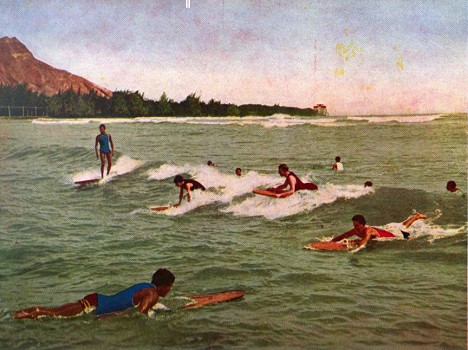
Page 316 Surf-board
riding, which is the sport royal of all
classes in Hawaii,
has been developed greatly of late years, so that feats on the waves not attempted in the old days are now the acquirement of many modern youths. First published inThe Hawaiian Gazette, Honolulu, June 28, 1907, page 6. Accredited as Alexander H. Ford: George Freeth, Spinning in on a Swift One. The photograph was probably shot by Edward P. Urwin |
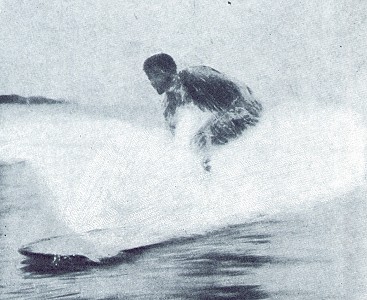 |
|
Surf-Board Riding in Hawaii
By LORRIN P. THURSTON. ABOUT six years ago Jack London wrote a splendid article on surfing in Hawaii, describing how it was done. Since then the methods of surfing have undergone some changes. I think that learning to ride a surf-board may be explained, so that anyone who knows how to swim well can, with a few days' practice, easily learn the first principles - even how to ride standing; but long practice is required to give complete control of the board. The first
thing in learning how to ride a surf-board, is
to get a good board.
A boy's surf-board is six to
seven feet long, two feet wide and from an inchand a half to two inches thick. |
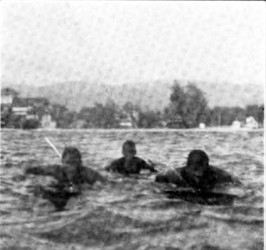 Paddling out. |
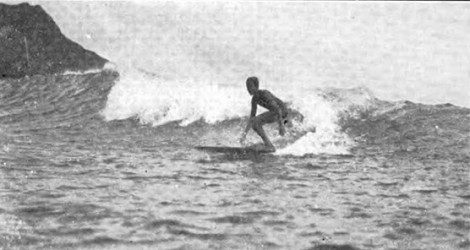
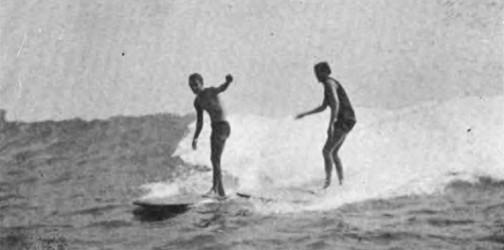
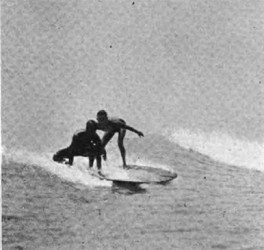 |
A collision. Two on a board.
|
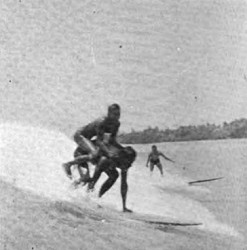 |
Page 321 Duke Kahanamoku before a wave.
A.R.
Gurrey Jr.:
Duke Kahanamoku, Waikiki, 1910. Initially
appearing as an advertising logo for A.R.
Gurrey Jr's studio in Honolulu, the photograph
appeared on the cover of the first edition of Ford's
The
Mid-Pacific Magazine in January, 1911. It was later included in Gurrey's Surf Riders of Hawaii, Honolulu, 1911-1914. |
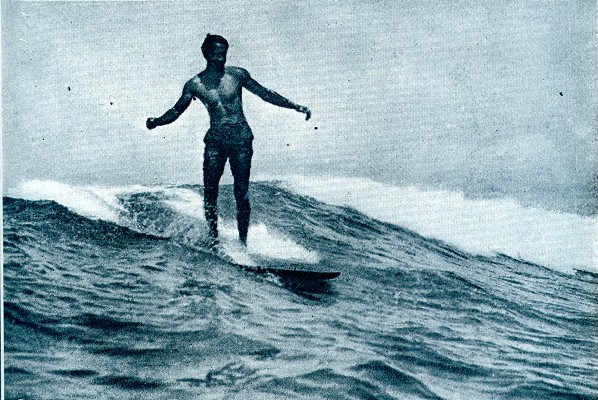 |
Page 322 When the rollers run high. An early example of the negative being flopped. As shown in several other photographs in the article, Diamond Head should be the the surfer's left. |
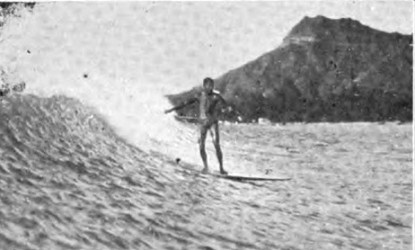 |
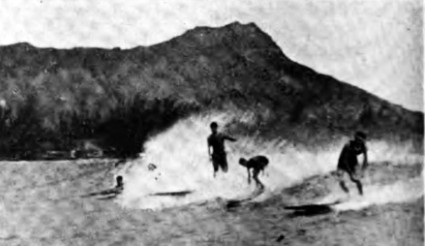
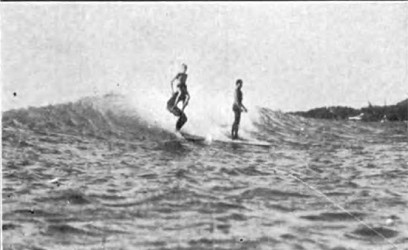
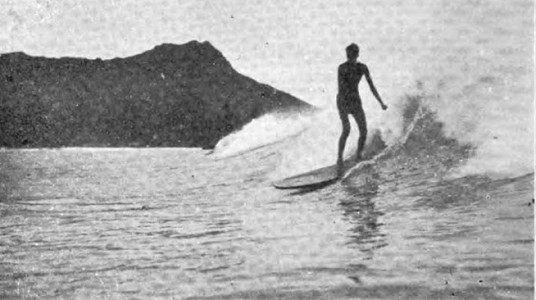
Page 325 Sport
Royal.
Later printed in an advertisement
for
Honolulu's Rapid Transport Company in the Mid-Pacific Magazine, July 1917, titled: Surfriding as
Seen From the Cars of the
Rapid Transport Company. |
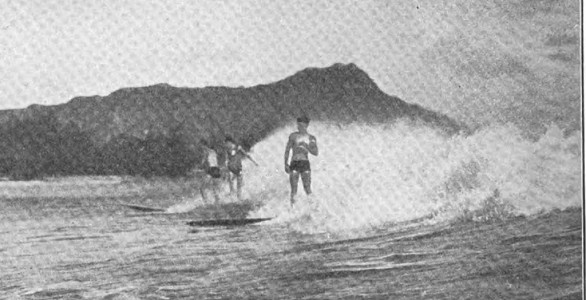 |
Mid-Pacific Magazine A. H. Ford, Honolulu, Hawaii Hathi Trust https://hdl.handle.net/2027/hvd.hxjg2a |
 |
|
|
|
|
|
|